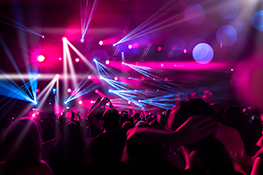Animating a Stage with Stage Light Effects
Stage lighting is an essential element of any performance, whether it’s a theatrical production, a concert, or a corporate event. Beyond simply illuminating the stage, stage lights can be used to create dramatic effects, evoke emotions, and tell a story. This article explores how to animate a stage using stage light effects, providing insights into techniques and considerations for impactful results.
Understanding the Power of Light
Stage lights are more than just sources of illumination; they are tools for storytelling and visual expression. Through color, intensity, movement, and focus, they can transform a stage, guiding the audience’s attention and enhancing the overall impact of a performance. The ability to animate stage lighting allows for the creation of dynamic visual sequences that complement the action on stage.
Color Dynamics
Color plays a pivotal role in creating ambiance and evoking emotions. Warm colors like amber and red can create a sense of intimacy and warmth, while cool colors like blue and green can suggest calmness or distance. Using color changes over time can create transitions, emphasize specific moments, or enhance the mood of the performance. Think about how the changing colors of a sunrise or sunset can affect our emotions – stage lighting can replicate this effect and create a powerful visual narrative.
Intensity Control
Adjusting the intensity of stage lights can dramatically alter the mood and atmosphere. A gradual dimming can create a sense of suspense, while a sudden burst of brightness can emphasize a dramatic moment. Dynamic intensity changes can mimic the ebb and flow of emotions, adding depth and realism to the performance.
Movement and Focus
Moving lights are a key component of stage animation. By manipulating the direction and focus of light beams, you can create dramatic effects. Tracking a performer on stage, panning across a scene, or creating swirling patterns of light all add dynamic elements that engage the audience. Consider the movements of the performers and how lighting can complement their actions, creating a seamless and engaging experience.
Choosing the Right Stage Lights
To create effective stage light animation, it’s crucial to select the right type of lights. Different types of stage lights offer unique capabilities, making them suitable for various applications.
LED Stage Lights
LED stage lights have become increasingly popular due to their energy efficiency, long lifespan, and wide range of color options. They are also versatile, available in various forms like spotlights, floodlights, and wash lights. The ability to control individual LEDs within a fixture allows for dynamic effects like pixel mapping, creating intricate patterns and animations.
Moving Head Lights
Moving head lights offer precise control over beam direction, focus, and color. They are commonly used for dramatic effects, creating dynamic chases, and highlighting specific areas on stage. Their versatility and advanced features make them ideal for large-scale productions and concerts.
Par Lights
Par lights are known for their broad, even wash of light, making them suitable for general stage illumination or creating a consistent backdrop. They can be used to enhance the overall mood and create a sense of depth and dimension on stage.
Programming and Control
To animate stage lights, you need a control system that allows you to program and execute lighting sequences. Modern lighting consoles offer a range of features, from basic control to complex programming capabilities.
Lighting Consoles
Lighting consoles provide a central hub for controlling all aspects of your stage lighting, including individual fixture parameters, color, intensity, and movement. They can be used to create complex cue sequences, time-based transitions, and dynamic effects.
Software-Based Control
Software-based lighting control systems offer a flexible and affordable alternative to traditional consoles. These programs allow you to design and program lighting sequences on a computer and then send those sequences to a dedicated interface for execution.
Tips for Effective Stage Light Animation
Here are some tips for creating engaging and impactful stage light animation:
Consider the Performance
The lighting design should be tailored to the specific performance, complementing the storyline, mood, and performers’ movements. Consider the flow of the performance and how lighting can emphasize key moments and transitions.
Focus on Storytelling
Lighting can be used to tell a story visually, guiding the audience’s attention and creating a sense of anticipation or suspense. Use lighting to enhance the emotional impact of the performance and create a memorable experience.
Use Color Strategically
Color can create a sense of place, evoke emotions, and highlight specific areas on stage. Use color changes to create transitions, emphasize specific moments, or enhance the overall mood.
Play with Intensity
Varying the intensity of light can create dramatic effects. Dimming the lights can create a sense of suspense or intimacy, while brightening the lights can emphasize a dramatic moment.
Practice and Experiment
The best way to learn stage lighting animation is to practice and experiment. Try different techniques, explore various effects, and see what works best for your specific production.
Conclusion
Animating a stage with stage light effects is an art form that elevates performances, creates visual narratives, and engages audiences. By understanding the principles of light, choosing the right equipment, and utilizing effective programming techniques, you can transform your stage into a dynamic and immersive environment.
For all your stage lighting needs, contact StageLights.in. We offer a wide range of stage lights, accessories, and expert advice to help you create stunning visual experiences.
Contact StageLights.in
Phone: 1800 200 6000
Mobile: +91 90150 60000
Email: info@stagelights.in


 Auditorium Construction Services
Auditorium Construction Services 